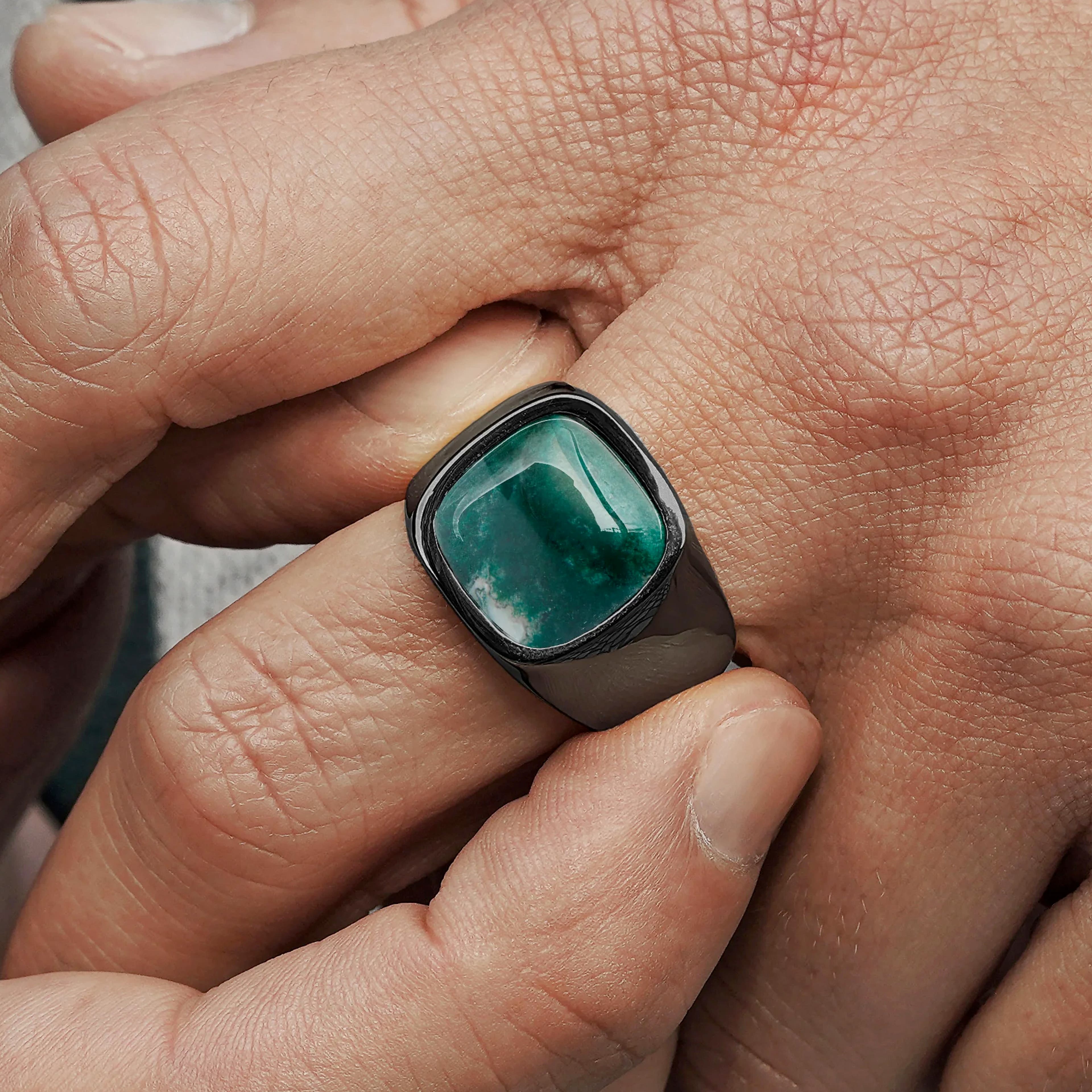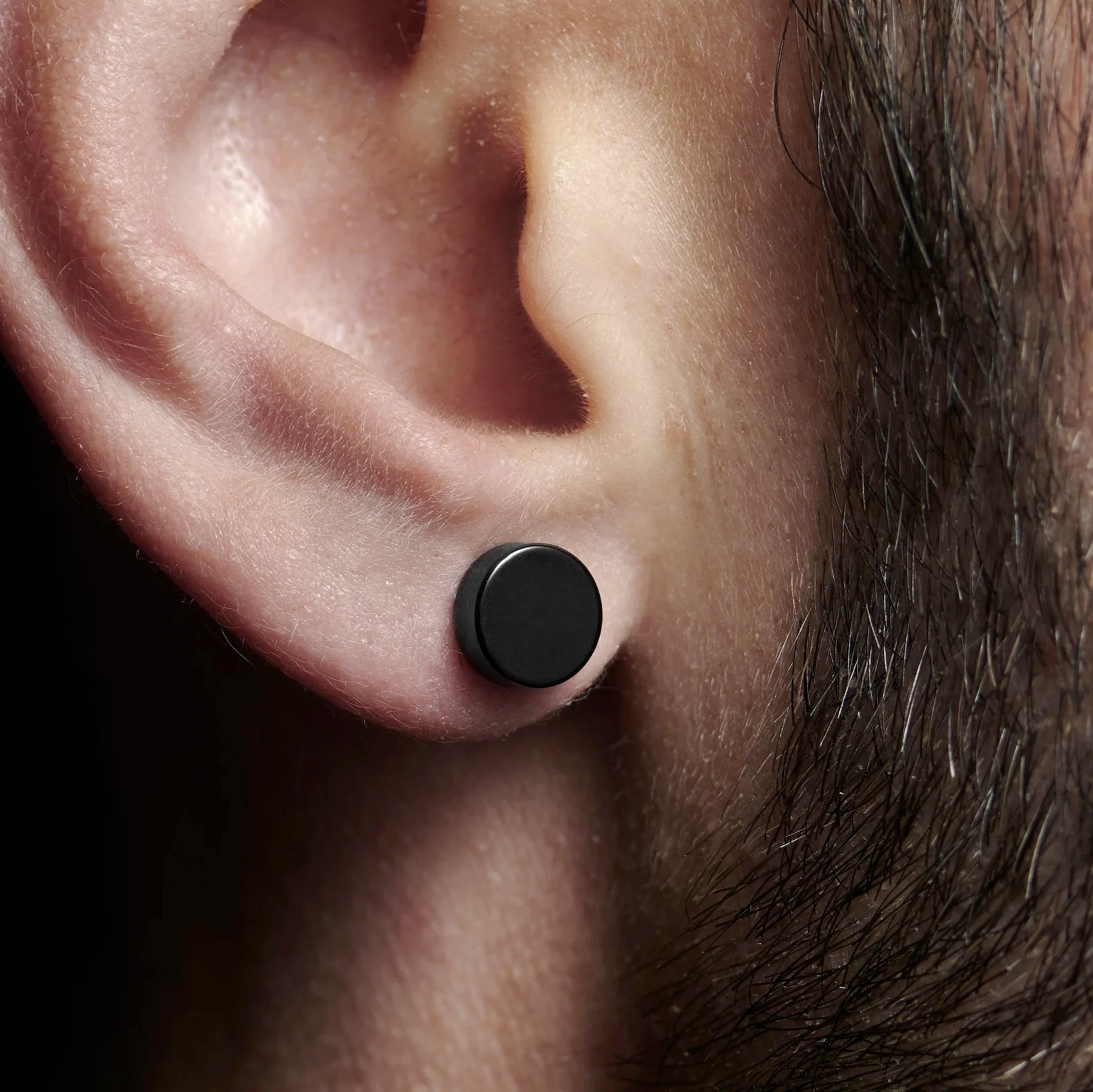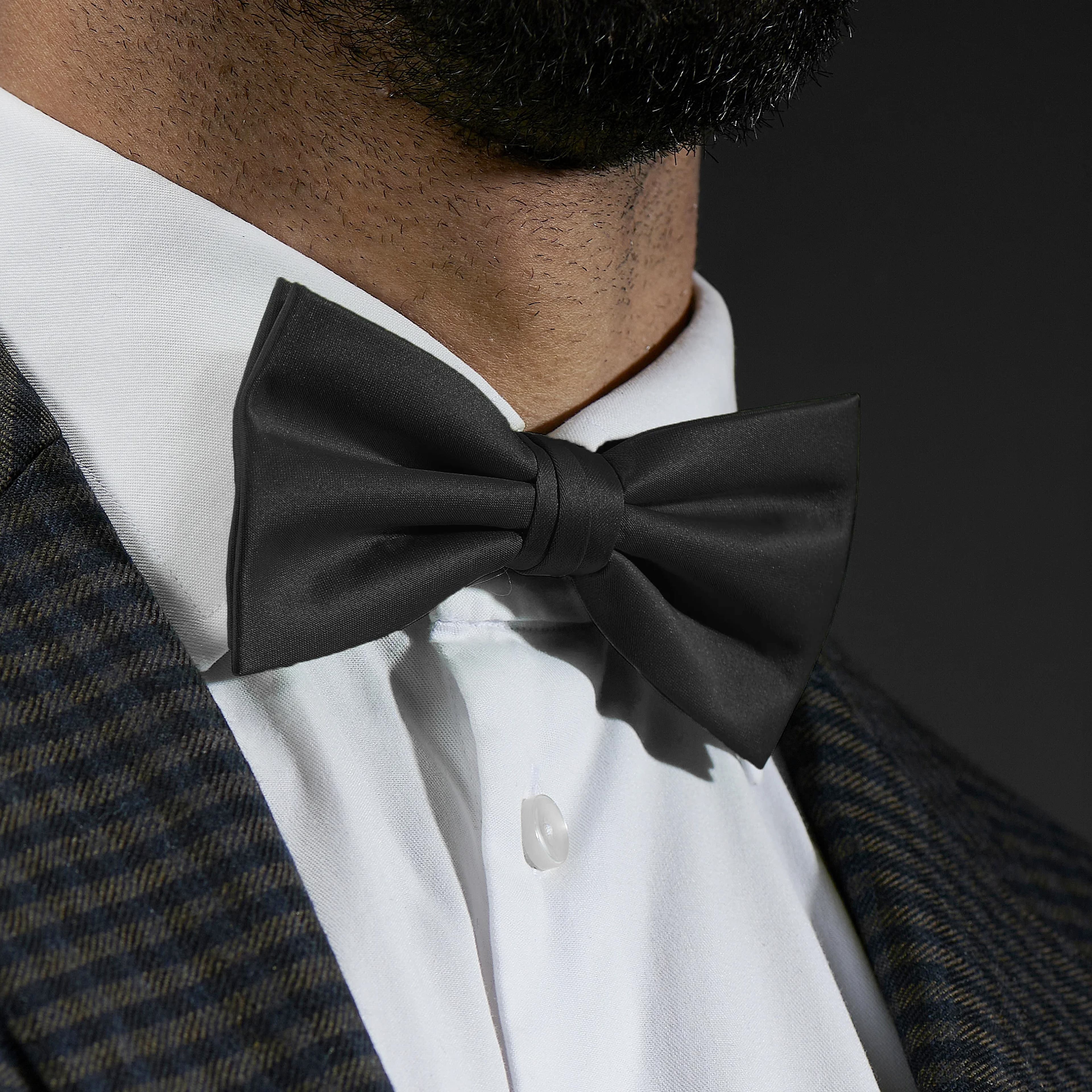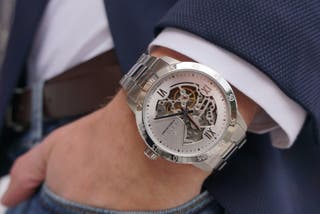
THE DANTE II MANUAL
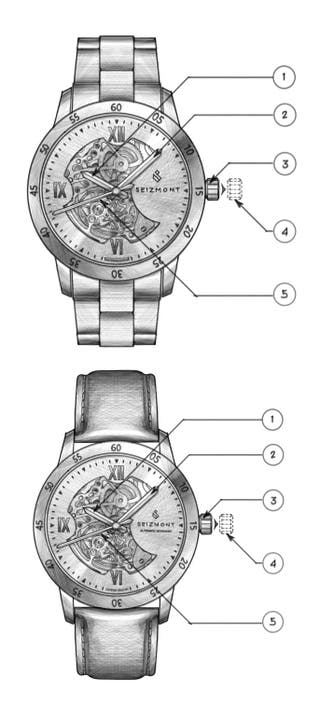
Instructions
- Minute hand
- Hour hand
- Crown
- Crown - First click
- Second hand
Setting the time: Move crown to position 4 and turn.
Winding the watch manually: Move the crown to position 3 and turn clockwise. Only do 1-5 full rotations or until you meet slight resistance. More and you risk breaking the movement.
Additional information: This watch is mechanical, meaning it consists of mechanical parts and no battery. Instead, it's powered by a spring that needs to be wound. This is an automatic mechanical watch, which means it'll wind itself using the momentum of your hand. Since you probably don't move that much during the night, and some people have more active jobs than others, it’s a good idea to get into the habit of winding the watch slightly every morning.
Specifications
- Movement: Seagull ST1646 Automatic Mechanical
- Water resistance: 3 ATM / 30 m / 100 ft
- Battery: Battery-free
- Glass: Sapphire Glass
- Case material: 316L stainless steel
- Strap material: Genuine leather, 316L stainless steel
- Nickel free: Yes
- Max. wrist size: Leather strap 8 1/16" (20.5 cm), Steel strap 8 3/8" (21.5 cm)
- Min. wrist size: Leather strap 5 5/8" (14.5 cm), Steel strap 5 1/3" (13.5 cm)
- Strap width: 4/5" (20 mm)
- Case diameter: 1 3/4" (44 mm)
- Dial diameter: 1 1/2” (36 mm)
- Case thickness: 1/2” (12 mm)
- Crown height: 1/5" (4 mm)
- Lug width: 7/8" (22 mm)
- Lug to lug: 2" (50 mm)
- Weight: Leather strap 2.75 oz (78 g), Steel strap 6.14 oz (174 g)
HOW TO TAKE CARE OF YOUR WATCH
WATER RESISTANCE
Most watches have some level of water resistance. If your watch isn’t water resistant, it may be able to handle small splashes, but don’t risk it. If it has a leather strap, don’t get it wet.

1 ATM / 10 meters This watch can't withstand any contact with water.

3 ATM / 30 meters This watch can easily cope with rain and splashes of water.

5 ATM / 50 meters This watch is safe to wear in the shower or while swimming.

10 ATM / 100 meters This watch is water resistant enough for snorkeling.

20+ ATM / 200+ meters This watch is safe for any underwater activity, like scuba diving.
How to clean your watch case
- Do not move the crown or push any buttons when your watch is in contact with water, as this may let water enter the case.
- If your watch is not water resistant, dip a cotton swab in a bowl of warm water with a drop or two of soap in. Squeeze the tip of the cotton swab to remove most of the water and gently rub the case.
- If your watch is water resistant, soak a soft cloth in a bowl of warm water with two drops of mild washing-up liquid added. Wring most of the water out of the cloth and gently rub the case with it.
HOW TO CLEAN your METAL STRAP
If your metal watch has lost some of its luster, you can bring it back by polishing it with a special microfibre cloth for cleaning jewelry.
- Gently wipe down the band and case to remove any dirt, dust, or fingerprints.
- For areas such as engravings, edges, and other details that are hard to reach, use a soft toothbrush.
- Always dry your watch with a soft cloth or towel after cleaning to remove pollutants and prevent water spots or stains from forming.
How to care for your watch
- Store your watch in a dark, dry place to avoid corrosion and discoloration of the dial.
- Always replace the battery on a quartz watch as soon as it runs out. With time, an empty battery may start leaking, damaging the watch’s movement.
- Run mechanical watches at least two days a year to prevent gears and cogs from sticking.
- You should always get your watch serviced by a professional every 3 years.
GENERAL CARE
Rule of thumb: Make sure your watch is the last thing you put on and the first thing you take off. - Take your watch off and store it safely before engaging in any activity that could damage it. - Take it off before engaging in any activity likely to make you sweat. - Take it off before you shower, bathe, or go for a swim. - Take it off before cooking or cleaning. - Take it off before you go to bed. - Don’t expose your watch to chemicals such as cologne, sunscreen, perfume, chlorine, hair gel, etc., as these can discolor, stain, or dull surfaces. - Try to store your watch separately in a soft enclosure to prevent scratching and rubbing. - If your watch has closures or clasps, close these to prevent tangling. - Keep your watch stored in a dry, dark place, and avoid heat fluctuation.
HOW TO ADJUST A METAL STRAP WITH LINKS
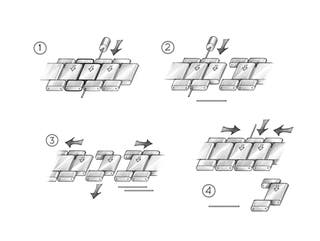
The links with arrows are removable. The arrows show in which direction the pins should be pushed.
- Use a pin pusher and remove the first pin. Set it aside.
- Decide how many links you want to remove and then push out the corresponding pin.
- Remove the undesired link(s). The more links you remove, the shorter the strap will be.
- Connect the remaining links and insert the pin to connect them.*
*You may need a small hammer to help push the pin into place.
FINE ADJUSTMENT BY MOVING THE CLASP
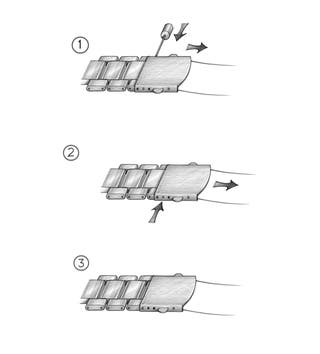
To make fine adjustments to the length using the clasp pins, push the pin in on one side and move the clasp slightly to lock it in place.
Repeat the process on the other side of the clasp.
Slide the clasp until the pins pop into the desired pinholes.
How To Remove A Watch Strap & Replace With A New One
To remove and change your watch strap, you’ll need:
- The watch
- A replacement strap
- A soft surface such as a cloth, t-shirt, or mouse pad
You may also need:
- A spring bar tool
- Or a sharp pointed object
HOW TO REMOVE A WATCH STRAP
- Place your watch on a soft surface. This prevents it from getting scratched or damaged.
- If your watch has quick-release pins on the underside, push the small lever inward to release the strap.
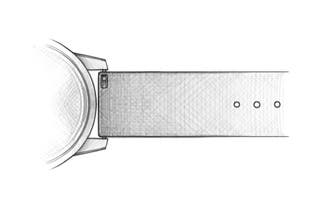
- If your watch has drilled lugs – small holes in the lugs extending from the main watch case – use a sharp, pointed object to push the spring bar in and release the strap. Be careful that the spring bar doesn’t slide out of the strap and get lost.

- If your watch strap has neither of these, use a spring bar tool. This is a small tool with a v-shaped tip. Use it to compress the spring bar from the underside of the strap between the lugs on the right. Using the tool, push down the ridge of the spring bar to release the strap.
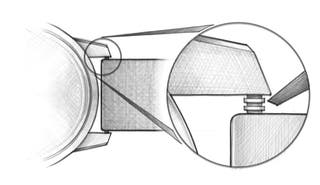
HOW TO REPLACE A WATCH STRAP
First, check the lug width of your new watch to verify that it’s 7⁄8” (22 mm). You can find all our watch straps here. Using the filters, select only the matching width to see our selection for your watch.

If your replacement strap has quick-release bars, press the bar inward and slot it into place between the lugs. You’ll feel it ‘lock’ into position. If your new strap doesn’t have quick-release pins, use the spring bar tool again. Place one end of the pin into place, then use the tool to compress the spring bar as you slot it in place. You’ll feel it ‘lock’ in position. Remember to take your time and be careful not to scratch the lugs or damage the new watch strap.
Troubleshooting & FAQ
If you take care of your watch and store it correctly, you should enjoy years of precision timekeeping. But even with the best care possible, you may find that your watch needs some extra attention from time to time. Below are some common issues. If you can’t find what you’re looking for, our Customer Service team is only an email or a phone call away.
If your new watch isn’t running, make sure you’ve removed the plastic piece between the crown (the knob on the side) and the case. Remove it and push the crown into its normal position.
The sudden impact of a fall may have caused a broken axle. If that’s the case, you’ll need a professional to repair or replace it.
The best way to avoid water getting into the watch case is never to operate the buttons or turn or pull the crown out in wet conditions. Even if your watch is water resistant or waterproof, humidity can get into the case as these parts move. Always make sure to close the crown properly before exposing your watch to water.
If you have droplets forming on the inside of the crystal or the crystal looks foggy, open the crown and place the watch in direct sunlight with the crown facing up and the dial facing the sun. Leave it this way for a few hours. If it’s a quartz watch and it has stopped working, the movement may be damaged beyond repair. Take it to your local professional for diagnosis and repair.
Automatic watches are self-winding and require physical activity (movement) to wind. If you’re not moving enough, the watch can’t build up energy to run. If you’re stationary for long periods, carefully wind the crown until you feel slight resistance, and stop.
All automatic watches will run out of power if you don't move them. They'll typically unwind and stop after 36 - 48 hours. Store your automatic watch in a watch winder case to keep it moving. Keep in mind that letting the power reserve run out is not a bad thing and won't damage your watch.
Automatic watches need to be wound to start working, either by wearing them while moving to wind the mainspring or by manually rotating the crown. If your watch is fully wound but runs slow, it may be time for a maintenance check. We recommend a service check from your local professional.
A slow or stopped watch can be caused by shock, magnetism, temperature, or even age. Watches also need lubrication to run smoothly. Check with your local professional to pinpoint the issue.
There are several possible reasons for your watch running fast. It may have been dropped or magnetized. Either can move the hairspring out of alignment. A local professional can diagnose and repair the issue.
2-YEAR WARRANTY
To keep the warranty on your watch valid, don’t expose it to water past the rated limit and make sure you keep the receipt.

Other categories
You thought we only sold watches? We've got more than 6.000 products spread over 21 categories of men's accessories. Explore some of them below.
